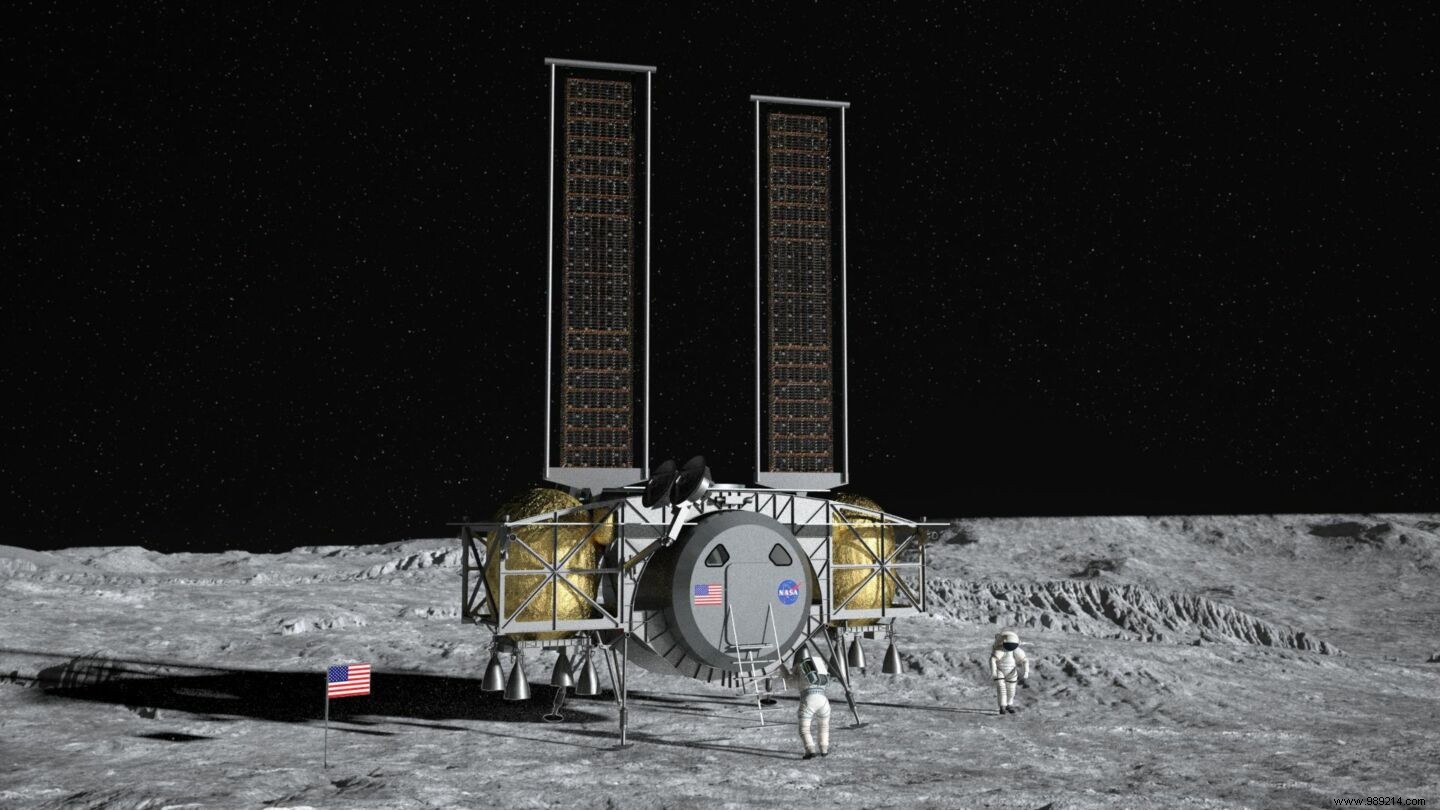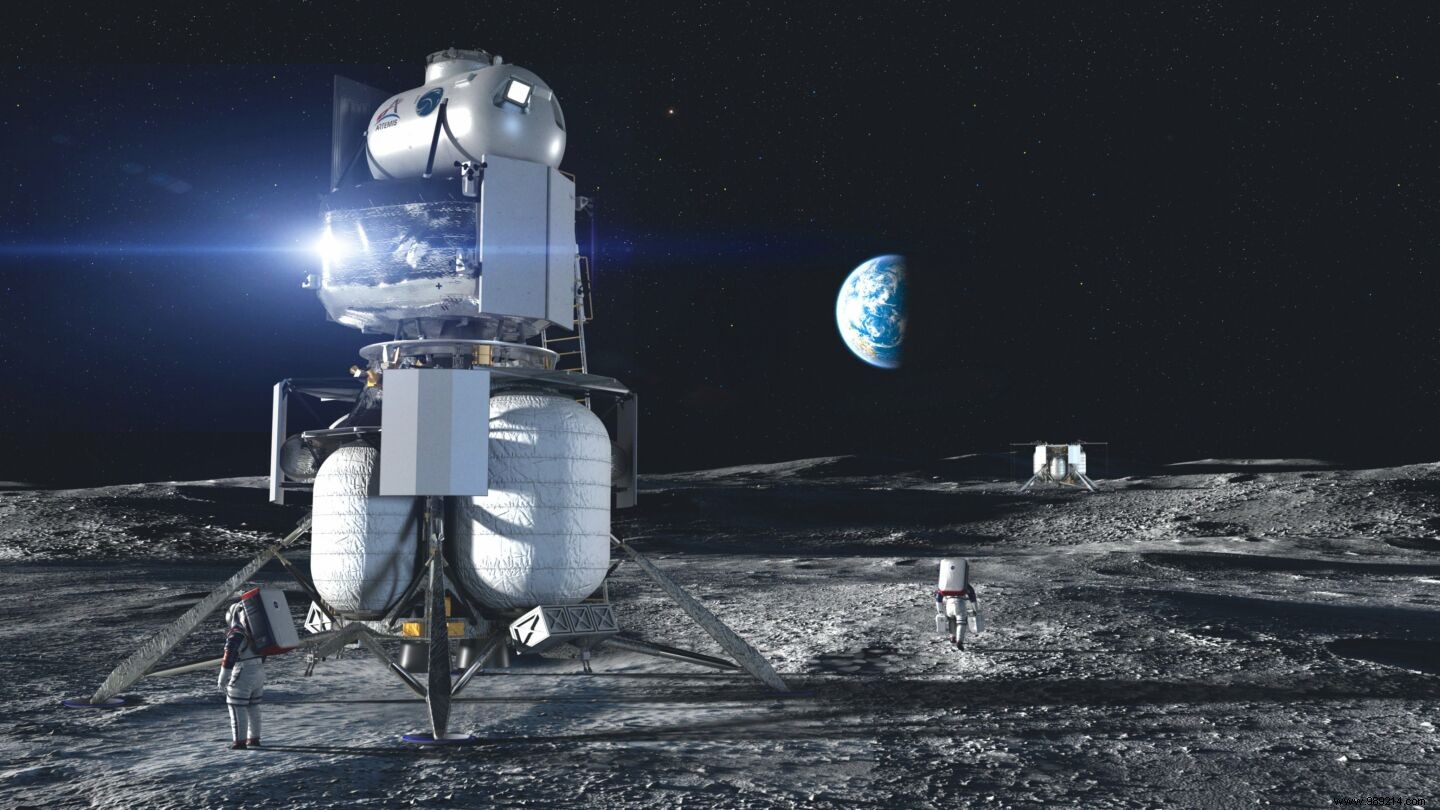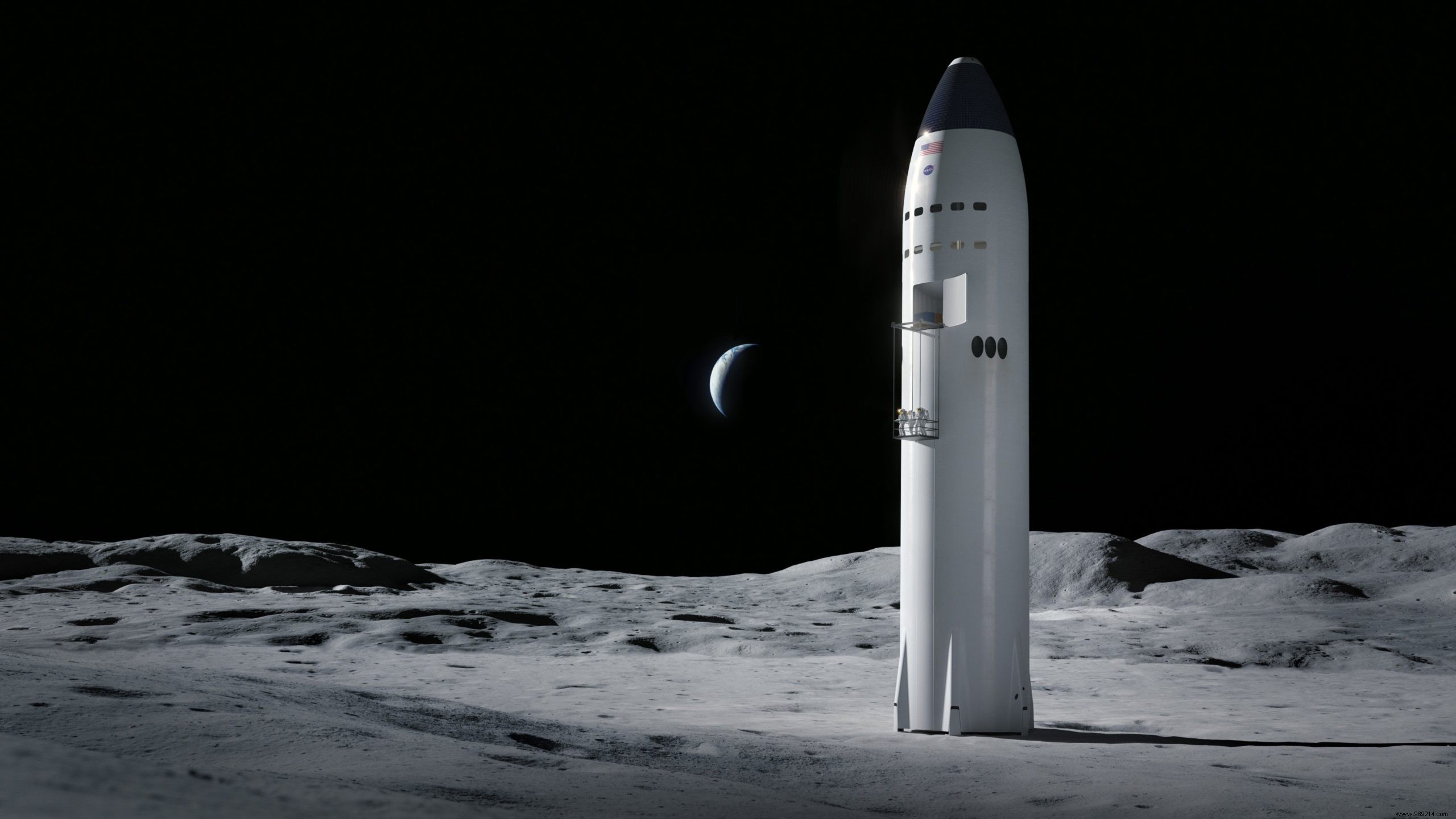NASA, which initially had to reduce the choice of its lander supposed to deposit new astronauts on the Moon as part of the Artemis program, has given itself a few extra weeks . In the meantime, SpaceX, Blue Origin and Dynetics, the three selected service providers, will continue to develop their approach.
Last May, NASA announced the awarding of three contracts to begin the development of lunar landing systems that will allow the next man and the first woman to land on the Moon in 2024 as part of the Artemis program. The companies chosen are:Blue Origin, Dynetics and SpaceX. Since then, these three providers develop prototypes of lunar landing vehicles which would normally be presented to US agency officials within a few days.
These three companies offer different approaches. While SpaceX intends to rely on its reusable Starship vessel, currently in the test phase, Blue Origin's prototype is a twelve-meter-high structure split into two parts. A descent stage would transport the astronauts to the lunar surface, propelled by a transfer module. An ascent vehicle would, on the contrary, extract them from the surface to bring them back to the Orion capsule, of which Lockheed Martin is the main contractor. Finally, the Dynetics approach is the closest to the Apollo lunar module, with a cabin close to the ground.
Also note that the distribution of budgets is also not equal. Blue Origin was thus granted the sum of 579 million dollars. The Dynetics team has an envelope of $253 million, and SpaceX a budget of $135 million. Note that these vastly different amounts do not reflect any "preference" in the eyes of NASA. They are actually based on the amounts requested by each of the three teams to develop their services .



NASA originally planned to narrow its choice to two companies to continue the competition by February 28. Finally, the agency gave itself until April 30 to make that decision, according to an announcement that appeared quietly in a Jan. 27 notice.
This decision was expected, according to The Verge. Indeed, NASA, which had asked Congress for a budget of 3.3 billion dollars for its Artemis program, can only count on a budget of 850 million . In addition, the United States now relies on a new administration more focused on more pressing national issues like the fight against global warming. This lack of funding could therefore be the main reason for the postponement of at least two months of NASA decision making.
In the meantime, Kathy Lueders, the new head of NASA's human spaceflight programs, believes the agency is still on track to meet its goal of land humans on the Moon by 2024. Still, the Biden administration has yet to comment on its plans for the agency. And we're not going to lie to each other, this deadline now seems too ambitious.